As reptiles have become increasingly popular pets over the last several decades, the number of species that have become available to hobbyists has exploded.
There are surely a couple of hundred species that are regularly available to the average hobbyist. This is fantastic for experienced keepers, who have the skills and knowledge necessary to care for poorly understood and exotic species, but it often makes things more difficult for beginners.
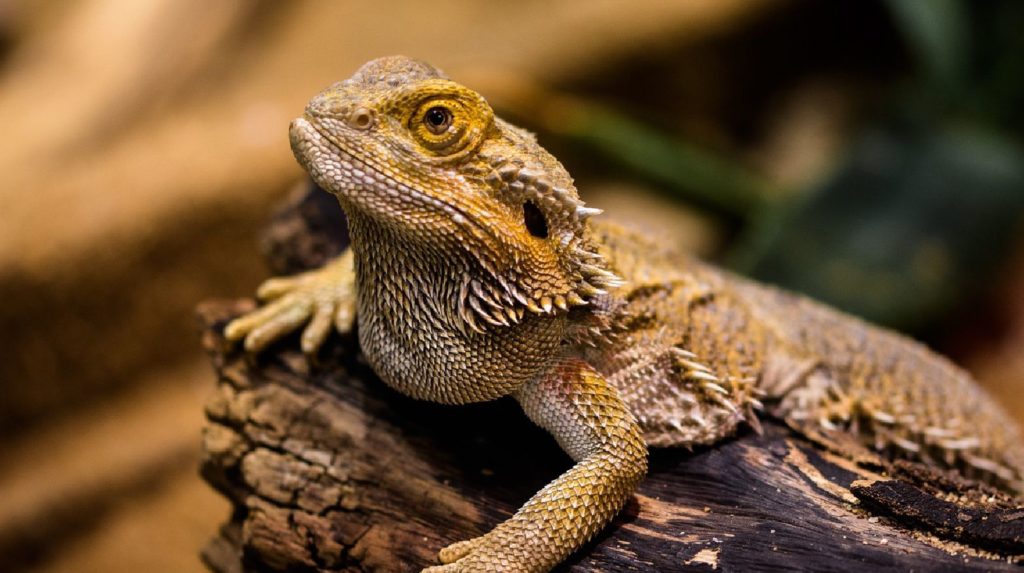
Many of the species available require elaborate care that novice keepers will struggle to provide, while others are notoriously foul-tempered or require hard-to-obtain foods.
But don’t worry – there are a variety of species that do make good pets for beginners. We’ll share 11 of the very best reptiles for beginners, below. We’ll also talk about a few that I’d consider “borderline beginner-appropriate” for new keepers.
Quick Navigation
The 11 Best Reptiles for Beginners
Check out our favorite reptiles for beginners below. Just remember that we’re all individuals, with varying preferences and skills. So, set yourself up for success and pick a species that is well-suited to your personality.
1. Bearded Dragons
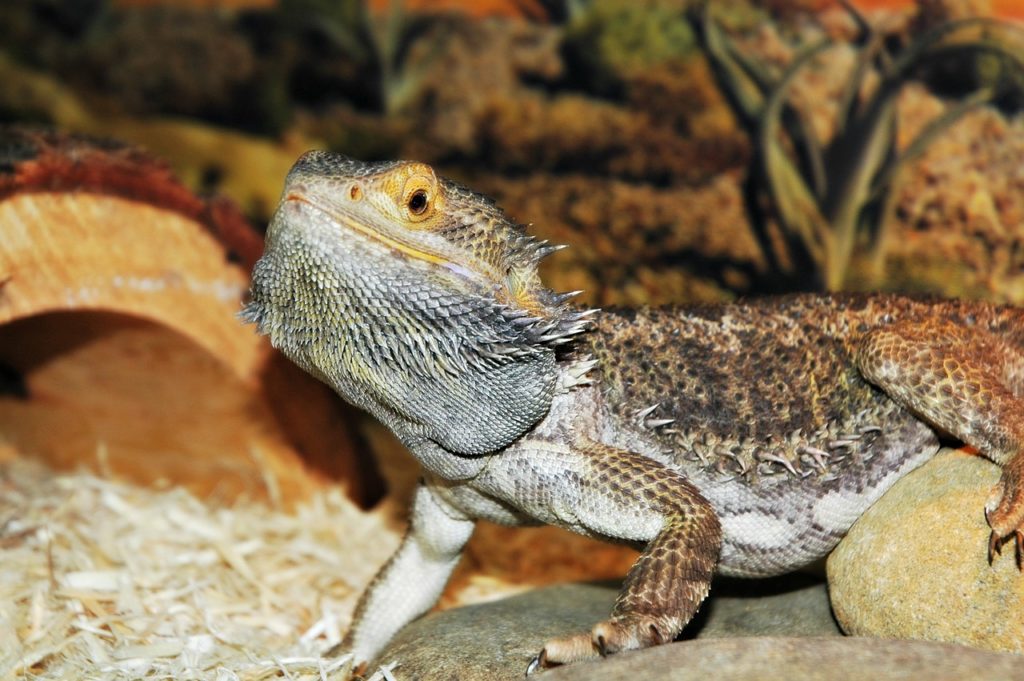
Bearded dragons (Pogona vitticeps) are usually considered one of the best reptiles for beginners, and it is easy to see why.
For starters, bearded dragons reach respectable sizes (most will grow between 18 and 24 inches in length), without growing so large that they’re difficult to house.
They are usually ravenous feeders who don’t present many feeding challenges, and they are among the most docile species in the entire reptile-keeping hobby.
Bearded dragons are also readily available in captive-bred form. In fact, North American and European keepers will only have access to captive-bred individuals, as Australia does not permit the exportation of native wildlife.
Additionally, breeders produce a variety of differently colored bearded dragons, so keepers will have plenty of options when picking out a specific lizard.
They do, however, present a few challenges.
Bearded dragons require full-spectrum lighting to remain healthy, and their impressive appetites mean that they produce a similarly impressive amount of waste. So, you’ll find it necessary to clean your dragon’s habitat on a daily basis.
Recommended Reading: How to Set up the Perfect Bearded Dragon Habitat
2. Leopard Geckos
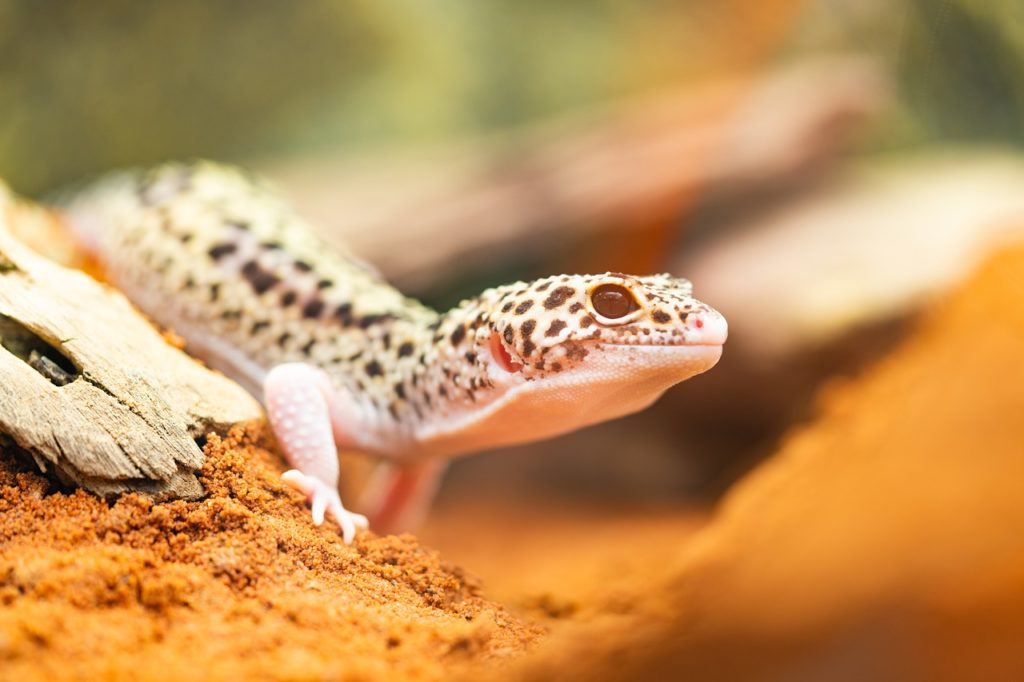
If you were to survey every “Best Reptiles for Beginners” article ever written, leopard geckos (Eublepharis macularius) would probably come out on top as the winner.
I won’t argue with that, except to say that they’re bug-eating lizards, which means they’ll require a tiny bit more care than a corn snake or ball python would.
Leopard geckos are also a bit on the small side.
This is great for parents who’re eager to set their son or daughter up with a pet that won’t take up much space. But it also means that you’ll have to handle the lizard much more gently than one who was about twice as large.
All that aside, leopard geckos are almost ideal. They’re easy to feed, they’re nocturnal, they’re usually very tame lizards, and generally require a pretty simple habitat setup.
Some seem to accept handling very readily and may even crawl into your hand semi-voluntarily. Leopard geckos are bred in ridiculous numbers, so they’re easy to find. You can even get them in a variety of beautiful color variations.
3. Corn Snakes
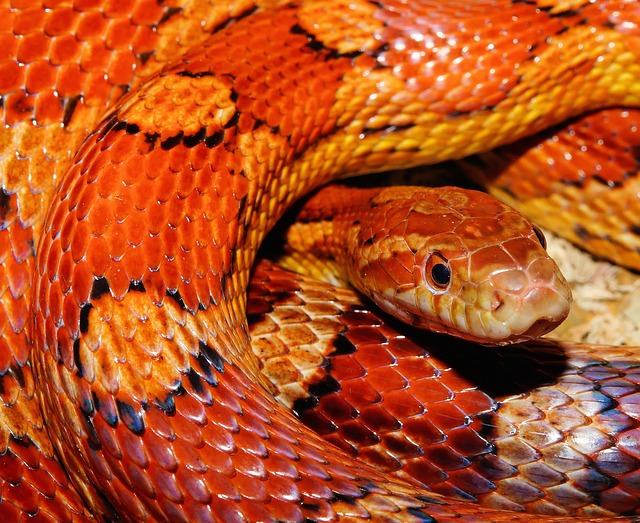
I’ll just say it: Corn snakes (Pantherophis guttatus) are the best reptile for beginners.
All other things being equal, snakes are easier to feed than lizards or turtles, they’re easier to handle than their legged counterparts, and they have slower metabolisms than most non-snakes too.
Corn snakes satisfy every one of the criteria we identified earlier, save for one: They’re not exclusively nocturnal; they alter their activity patterns as climate, food availability and other factors dictate.
But that doesn’t really matter anyway, as the vast majority of snakes appear to thrive without the need for fancy lighting (which is the reason nocturnal species are normally preferred).
A corn snake won’t even care if you light his habitat or not – he’ll get by just fine with ambient room light.
Thousands of corn snakes are born in captivity each year, they’re usually docile, and they’ll thrive on a diet of rodents for their entire life. Corn snakes are also the ideal size, although really big ones may flirt with the 5-foot mark.
Honestly, there’s not much I can say to disparage these awesome serpents.
4. Ball Pythons
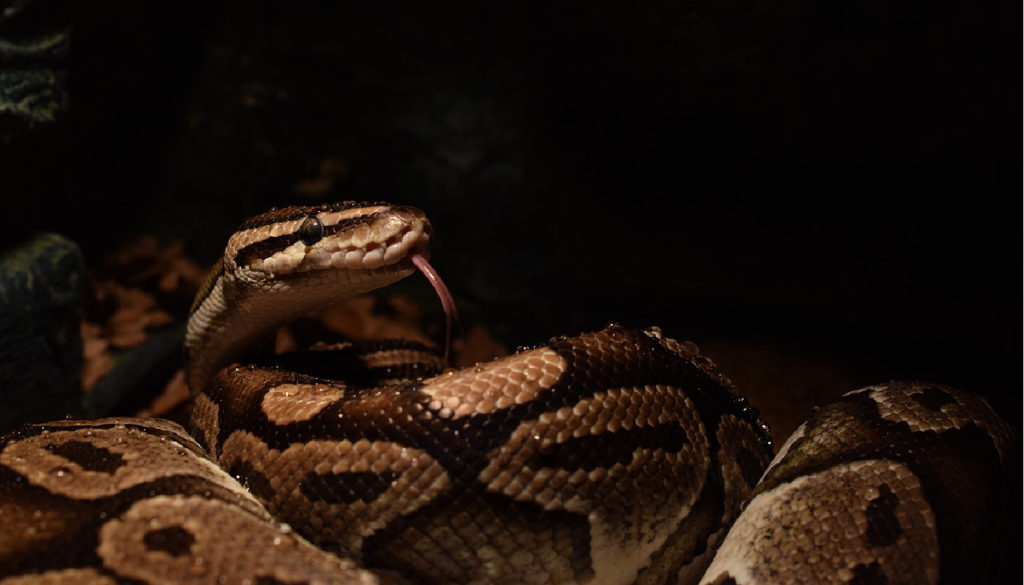
The only reason I would rate corn snakes as slightly better for beginners than ball pythons (Python regius) is that the pythons are tropical animals, who require slightly warmer temperatures.
That aside, ball pythons are just as awesome for beginners as corn snakes are. They’re usually tame, they’ll thrive without any special lighting and they reach ideal sizes. And while wild-caught ball pythons can be maddeningly difficult to feed, captive-bred specimens (which are readily available) typically eat mice or small rats without issue.
Additionally, while normal-looking ball pythons are very handsome animals, they’re available in a mind-bending number of color and pattern variations.
5. Russian Tortoises
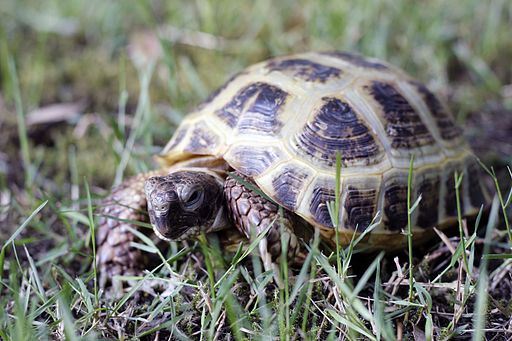
Let’s be clear: Turtles and tortoises are generally among the most challenging options for beginners.
That said, Russian tortoises (Agrionemys horsfieldii) are likely the best choice for keepers who have their heart set on a shelled critter.
Starting with the positive aspects, Russian tortoises are ideally sized for beginners, as they typically reach about 4 or 5 inches in straight-line shell length. And they’re not only docile – many could arguably be considered “friendly” or “outgoing” by reptilian standards.
They clearly seem to recognize their keepers, and if you aren’t careful, your Russian tortoise will chase you around, climbing on your feet and “begging” for food.
However, they do present several key challenges new keepers will need to be willing to accept. These are diurnal herbivores, who’ll not only require full-spectrum lighting but a carefully calibrated diet too.
But most troublingly, they’re not bred very regularly. Most of the Russian tortoises you’ll see for sale are wild-caught individuals.
Captive-bred specimens are available, and new keepers would be wise to seek them out.
However, beginners can often succeed with wild-caught Russian tortoises, assuming they’re willing to work with their vet to eliminate any parasites or infections present, provide proper lighting, and devise an appropriate diet.
6. Musk Turtles
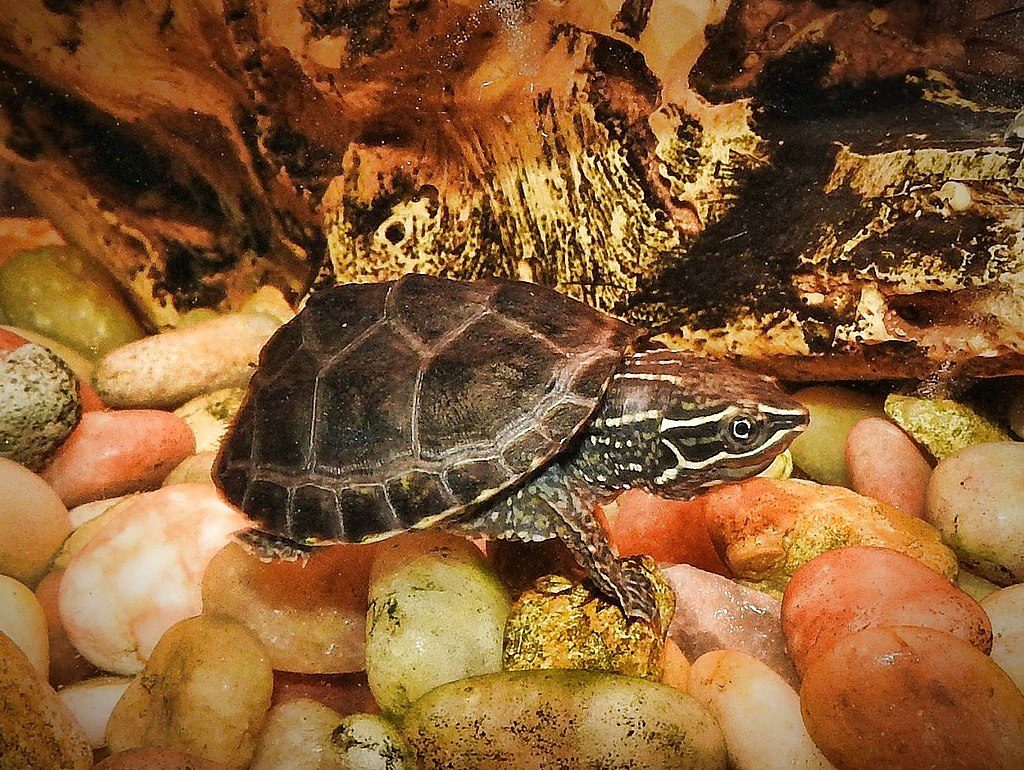
Maintaining an aquatic reptile is one of the most complicated endeavors a beginner can attempt. In addition to learning everything necessary to maintain a “typical” reptile, you must also learn how to maintain an aquarium.
However, given sufficient dedication and resources, beginners can (and do, often) succeed with aquatic turtles.
Musk turtles (Sternotherus odoratus) are likely the species with which beginners will most likely enjoy success, but unfortunately, they’re rather drab-looking, which causes many to look elsewhere.
Nevertheless, musk turtles have a lot going for them. They’re relatively small – most reach about 4 or 5 inches in straight-line shell length – and remarkably hardy.
They will eat just about anything, and it is easy to keep them healthy on a varied diet, comprised of pellets, bugs, fish and some vegetable matter. They’re also nocturnal, which means they don’t appear to need any type of special lighting.
Musk turtles aren’t exactly friendly, but they usually aren’t aggressive. Even those who are prickly are easy to handle, given the layout of their bodies.
7. Painted Turtles
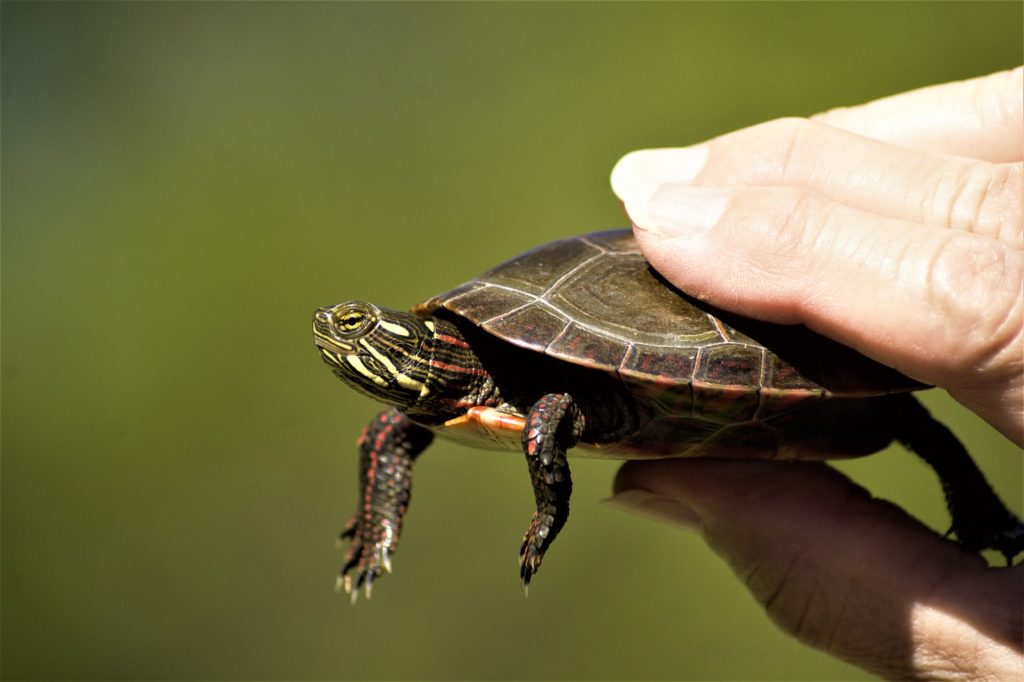
If musk turtles don’t strike your fancy, you may want to consider painted turtles (Chrysemys picta). Painted turtles are slightly more challenging to maintain, but they’re still pretty suitable for new keepers.
Painted turtles grow larger than musk turtles, and they’re more active too. This means you’ll need to provide them with a relatively spacious tank – something in the 50- to 100-gallon range would be ideal.
Of course, you’ll also need a very substantial filtration system to keep all of this water clean, which will increase the initial cost of the habitat significantly.
Painted turtles will require full-spectrum lighting, as well as a basking lamp to maintain proper body temperatures.
They’re typically relatively easy-going turtles who are easy to handle, and they’re also pretty easy to feed too – a varied diet of pellets, fish, insects and plant matter will usually keep them healthy.
Red-eared sliders (Trachemys scripta elegans) are pretty similar to painted turtles and they’re more widely available in the pet trade, so many recommend them for beginners.
However, red-eared sliders can reach larger sizes than painted turtles, which presents additional, unnecessary challenges for the keeper.
8. Blue-Tongued Skink
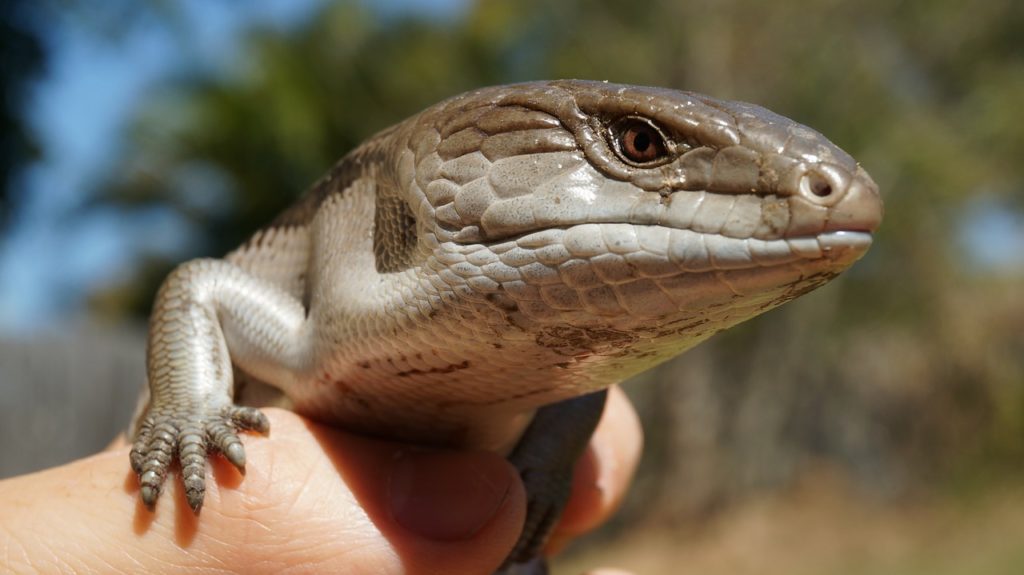
Blue-tongued skinks (Tiliqua spp.) are unusual-looking lizards with very smooth scales, large heads, and relatively tiny legs.
They’re named for their brightly colored tongues, which they’ll use to frighten away perceived threats. However, most blue-tongued skinks are pretty tame in captivity and easy to handle.
Blue-tongued skinks are omnivores, who’re generally easy to feed. You will, however, need to provide them with an array of different foods to ensure they enjoy a balanced diet.
Generally speaking, this will mean providing your pet with a combination of insects, rodents, fruits, vegetables and commercially prepared foods.
It isn’t entirely clear whether or not blue-tongued skinks require full-spectrum lighting. Some keepers provide their lizard with lights that produce UVB wavelengths, while others simply use basking lights on their lizards’ habitat.
It is probably wisest to provide these lizards will full-spectrum lighting until and if it becomes clear that they do not require it.
9. Common Kingsnake
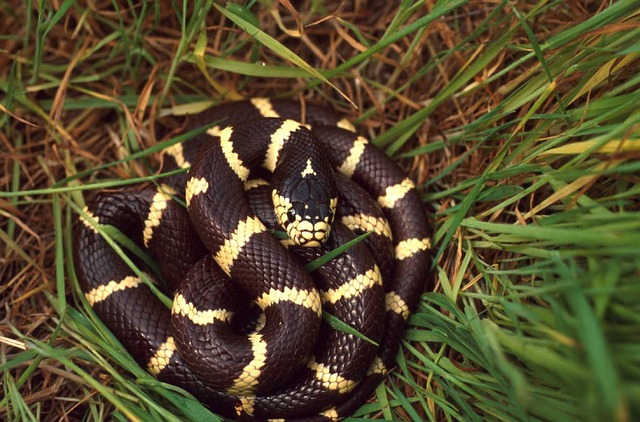
Common kingsnakes (Lampropeltis getula sspp.) are very well-suited for beginning reptile enthusiasts. They reach ideal sizes (most are about 3 to 5 feet long), they’re very hardy animals, and they’re usually relatively docile.
Hatchlings are often quick to release foul-smelling musk when handled, but most calm down over time and become quite tame.
A small percentage of hatchlings can be tricky to feed, given their preference for reptilian prey, but it is usually not difficult to find captive-bred juveniles who readily eat rodents.
Like most other snakes, common kingsnakes will thrive without any special lighting, and they will also remain comfortable in enclosures of relatively modest size.
There are several different subspecies of the common kingsnake, but they will all thrive under relatively similar care regimens.
California kingsnakes are likely the most popular among reptile enthusiasts, but eastern (L. g. getula) and Florida kingsnakes (L. g. floridana) are interesting alternatives. Several color mutations occur within this species, giving keepers plenty of different-looking options.
10. Rosy Boa
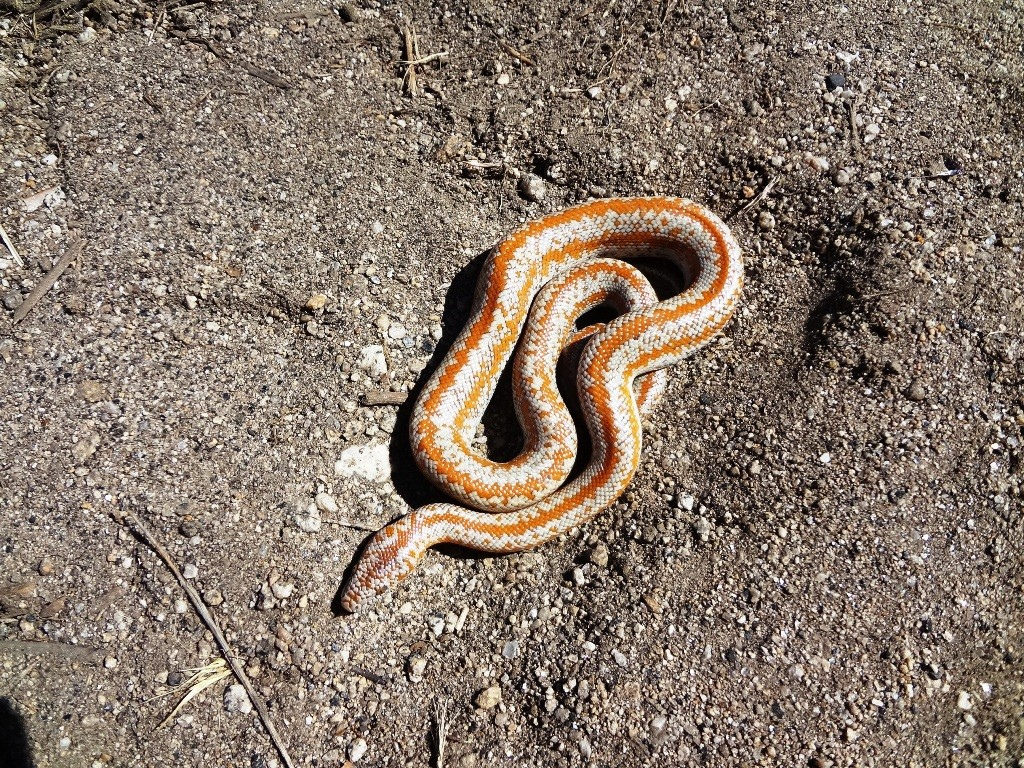
Rosy boas (Charina trivirgata) are criminally underappreciated snakes, who are often a great choice for novice reptile keepers.
Unlike some of their cousins, who grow too large to be appropriate for beginners, rosy boas reach about 3 or 4 feet in length. They’re also pretty calm snakes, who take keeper interaction and handling in stride.
Rosy boas will thrive in relatively simple habitats, and they will remain healthy without any special lighting. They rarely present feeding problems, as most individuals are aggressive feeders.
It is usually not difficult to find captive-bred rosy boas, as they’re bred with regularity. Rosy boas are also attractive animals, with longitudinal stripes – a relatively rare pattern among commonly kept snake species.
Additionally, rosy boas occur as several different subspecies, which will give you multiple color varieties to choose from. They’re even available in albino (amelanistic) form.
You will need to keep your rosy boa’s habitat relatively dry, as they hail from arid habitats. However, it is usually easier to maintain animals that require a dry environment than those who need high-humidity, rainforest-style enclosures.
11. Crested Gecko
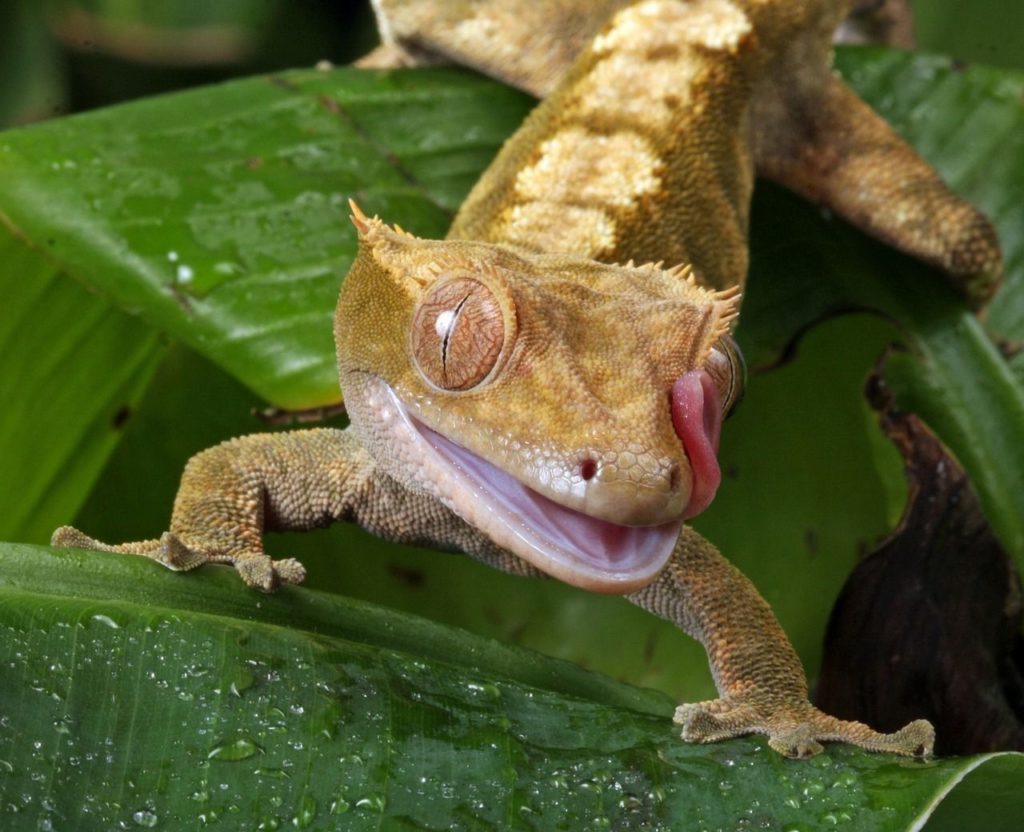
Crested geckos (Correlophus ciliatus) are another solid contender for the title of best beginner reptile.
These lizards were only re-discovered by science in the mid-1990s, after being thought extinct for decades. Fortunately, it didn’t take keepers very long to figure out their captive needs and the ideal husbandry regimen for them.
Part of the reason crested geckos are so well-suited for novices is that their needs are remarkably easy to meet.
Not only can crested geckos remain healthy without full-spectrum lighting, but they’re also relatively small, so they don’t require very large enclosures or habitats.
They can also subsist entirely on commercially produced foods, so you don’t have to feed them insects if you don’t want to.
Additionally, crested geckos thrive in relatively mild temperatures, so – depending on the temperature at which you keep your home – you may not even need to utilize heat lamps.
These lizards aren’t as docile or easy to handle as bearded dragons or leopard geckos, but they’re rarely defensive or inclined to bite.
Crested geckos are also attractive lizards, who are available in a kaleidoscopic array of colors and patterns.
What Makes a Good “Beginner Reptile?”
Distinguishing reptiles that are well-suited for beginners from those that aren’t is not an arbitrary process. There are several key characteristics that make a reptile a good choice for new keepers.
Not every one of the species we’ll discuss later satisfies all of these criteria, but they all satisfy several.
Captive Bred Individuals Are Readily Available
The difference between captive-bred and wild-caught reptiles is profound.
Wild-caught reptiles are invariably parasitized. They have always experienced acute stress, and many have done so for weeks or months. They are generally less tolerant of human interaction than captive-bred specimens, and many are already suffering from illness before you even make the purchase.
Accordingly, captive-bred specimens are almost always preferable, especially for beginners.
No Unusual Food Requirements
Feeding a pet reptile often gives new keepers enough grief that there’s no reason to make things any more challenging than they have to be. So, skip species that require ants, reptile eggs, or anything else that’s hard to source.
You can pick an herbivore if you’re willing to do your homework (it’s more difficult to devise an herbivorous diet), but it’s much easier to just pick a reptile that will thrive on a diet of crickets, mice or a pre-made commercial food.
Nocturnal Species
Nocturnal species are generally a better choice for beginners than day-active reptiles are, but for an unexpected reason: Many diurnal lizards and turtles require somewhat complicated lighting to remain healthy.
Beginners who’re absolutely in love with a given diurnal species can still have success, but if you aren’t already attached to the idea of a particular pet, do yourself a favor and select a nocturnal species. It’ll just let you side-step a host of challenges.
Docile Temperament
Some reptiles interact with humans in a manner similar to a few commonly kept birds or small mammals. They’ll tolerate your presence, and they may even find it mentally stimulating or otherwise beneficial.
But others react to humans with the diplomacy of a hornet.
There’s nothing wrong with keeping those in the latter group (assuming they’re small enough that they don’t present a safety hazard), but you’ll have to consider them “pets” in the same way fish are. You’ll still have to interact with them from time to time, but you’ll want to do so deliberately and only when necessary.
This is not what most beginners have in mind when they start thinking about buying a pet reptile. So, just start with a tame species if at all possible.
Reasonably Sized
It seems obvious that beginners should absolutely avoid keeping species that become very large. Not only do large reptiles require very large accommodations, but they are also expensive to maintain and often present safety concerns.
But beginners should also avoid extremely small species. Very small species are often difficult to feed, they’re generally much more fragile than medium-sized species, and it is more difficult to treat them for injury or illness.
Additionally, very small reptiles heat up and cool off much more rapidly than medium-sized species do. This reduces a bit of the “wiggle room” better-suited species provide.
Simply put, look for turtles in the 4- to 6-inch range, lizards in the 8- to 24-inch range and snakes that are about 3 or 4 feet long.
Honorable Mentions
The 11 species mentioned above are certainly among the best options for beginners. However, there are a few other species that beginners may also want to consider. Just realize that these animals will present additional challenges, which most of those described earlier will not.
- Tokay Geckos – Tokay geckos (Gekko gecko) are some of the hardiest reptiles around, they’re nocturnal, perfectly sized, and easy to feed. But they are almost invariably pugnacious and perfectly willing to bite (hard). Captive bred individuals can sometimes learn to accept handling, but it can be challenging to find captive bred tokay geckos.
- African Fat-Tailed Geckos – Almost everything you can say about leopard geckos you can say about African fat-tailed geckos (Hemitheconyx caudicinctus). They’re not as flamboyant looking as their Asian counterparts, and they aren’t bred as frequently, but if you’d like something a little different, the African fat-tailed gecko deserves consideration.
- Prairie Kingsnakes – Prairie kingsnakes (Lampropeltis calligaster) are just as suitable for beginners as corn snakes or common kingsnakes are. They aren’t bred as commonly, and they aren’t available in as many color variations, but they’re usually calm, easy-to-keep, easy-to-feed, perfectly sized serpents.
- Box Turtles – A million kids have temporarily maintained a box turtle (Terrapene spp.) found crossing the road, but (thankfully) most are released to the wild shortly thereafter. In actuality, the only reason box turtles didn’t make our top 13 is the fact that they’re not bred terribly commonly, and most of those offered for sale are wild caught. But captive-bred box turtles are easy to maintain, although they will need full-spectrum lighting.
- Various Tropical Tree Geckos – There are scads of (mostly Southeast Asian) tree geckos available in the pet trade. They’ll almost always be wild-caught, and many will be flighty or defensive when handled. Those things aside, most such geckos are relatively easy to maintain, if you’re willing to obtain competent veterinary care. But if you’re willing to invest in veterinary care, you’d likely be better served by just opting for a species that is available in captive-bred form. Note that there are also many tropical tree geckos, such as leaf-tailed geckos (Uroplatus spp.), which are not suitable for beginners.
Conclusion
There’s obviously nothing stopping beginners from keeping reptiles that aren’t on this list. If you like, you can go right out and buy a mata mata (Chelus fimbriata), caiman lizard (Dracaena spp.) or some other notoriously challenging species to maintain.
Spoiler alert: It will not go well.
Instead, get started on the right foot, by picking a species with which you’re likely to succeed. Personally, I still enjoy many of the critters on our list, and I’ve been lucky enough to work with reptiles for decades.
Start with a good species. Learn all that you can about them. Do your very best to give your pet the highest quality of life possible.
That is a recipe for success.